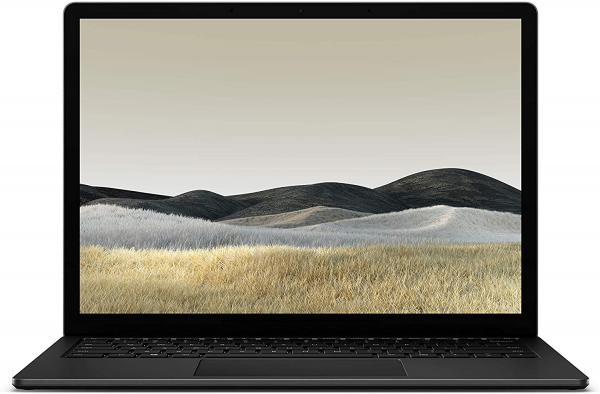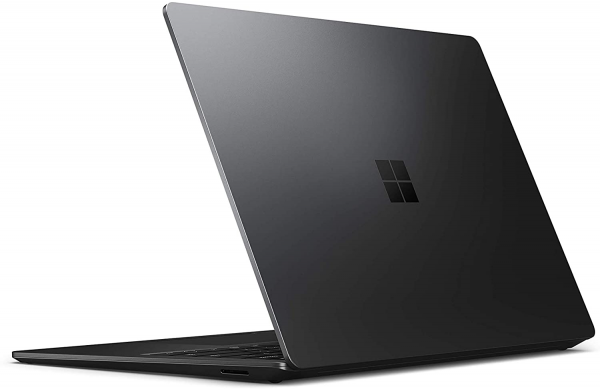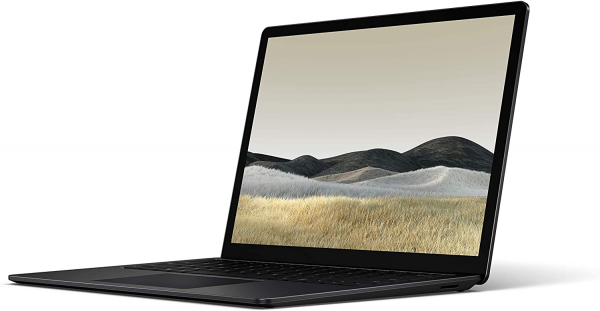Microsoft
Portable Microsoft Surface Laptop 3 (15 '', Ryzen 5): AMD no longer has anything to envy Intel
Aprox. 1319€
See specificationsIn October 2019, Microsoft formalized its collaboration with AMD by announcing a Surface Laptop 3 15 '' equipped with a Ryzen processor. An association that we are testing today and which confirms that AMD has nothing more to envy Intel.
Our review
Presentation
Microsoft had created the surprise during the presentation of its new Surface Laptop 3 range by formalizing its collaboration with AMD. However, as beneficial as this movement was, it did not involve any major changes in terms of design or functionality, except the introduction of a new 15 inch format in addition to the 13 inch versions. historical.
Therefore, the challenges of this test will be as follows: can the sobriety of the “Surface Laptop” concept be applied without suffering on a 15 inch format? And will AMD processors live up to the confidence of their new partner? Knowing that we are dealing here with a Ryzen 5 Microsoft Surface Edition chip (Reference R5 3550U), specially developed for the occasion.

Construction
Take a 13.5-inch Surface Laptop 3, push its dimensions a few tens of millimeters in length and width, and you get the 15-inch Surface Laptop 3. Sounds simplistic, but it's exactly the formula that Microsoft has adopted for its new ultraportable. From there, difficult to miss the first element which already shocked a little on the 13.5 inch version, and which is even more disturbing here: the lack of available connectors. All in all, our Surface has a USB 3 type-A port, a USB 3 type-C port, a combo mini-jack and a proprietary charging port, which we note that '' It is still just as difficult to use despite the presence of a magnetic system to ensure its maintenance.
For a 15 inch format, it is very very light. And if we understand the desire of Microsoft to fully express the sobriety of a very successful design, it is difficult to understand that this Surface Laptop 3 did not benefit from a more substantial functional part. At least, the manufacturer could have provided a USB-C hub to compensate for the absence of a card reader, HDMI ports or network port. With, why not, a small stylus as a bonus to take full advantage of the touch screen. But no ... Microsoft is playing dirty, and on a product that displays such high pricing ambitions (we are talking about € 1,400 on the official Microsoft store for our test copy), it does not work.
Switching to a Ryzen processor brings another unfortunate consequence: no Wi-Fi 6, only Wi-Fi 5 (802.11ac) and Bluetooth 5.
Another element seems problematic on this 15 inch format: scalability. As with the Surface Laptop 3 that we previously tested, the screws are hidden under non-slip pads, which are very complicated to remove without damaging them. It must be possible to ask Microsoft for a memory expansion or a change to the storage system, but this will obviously not be without additional costs.
These arguments obviously lead to disappointment, but we must not forget that the little that this Surface Laptop 3 15 inch version does, it does it really very well. The construction exudes quality and robustness, whether in the rigidity of the screen or in the adjustments of the different elements of the chassis. The input interfaces also benefited from the greatest care. Finally, the Windows Hello compatible camera knows how to make itself essential, since it allows rapid unlocking of the PC, without error, and with detection over a fairly wide angle.
This mastery is also felt when we focus on studying the machine in operation: on high CPU load (H.265 encoding), the chassis temperature rises to 41 ° C at the keyboard and 44 ° C at the chassis base (hottest area). For a machine of this format, as fine, these values are quite commendable and echo a processor temperature which finds a stabilization range under load between 60 and 65 ° C. Logical consequence of all this: ventilation does not have to be forced to evacuate heat and noise pollution is limited to 39.5 dB. At rest, the PC therefore makes no noise. An intense work session generates only a slight breath that only a calm environment will allow to perceive. The integration of a Ryzen 5 processor is therefore almost painless, while it comes with a significant bonus on the performance front, as we will see ...

Performances
The Ryzen 5 3550U processor (4 cores / 8 threads) obtained a score of 58 points on the entirety of our test protocol, which corresponds to a positioning lower than that of Ryzen 5 3500U (average index of 64 points). This is explained in particular by the low operating frequencies: 2100 MHz on average on a maximum load (8 threads, 100%), when we expected more a value around 2700 MHz. It is interesting to note that this argument had already appealed to us when we tested the 13-inch version equipped with an Intel i5-1035G7 CPU. The Intel chip then obtained a score of 55 points, the lowest we have seen on the i5 Ice Lake range. We can only assume that these are technical arbitrations linked to the design of Surface Laptop, and that in a more favorable context, these processors would have had more time to express themselves.
Anyway, the performance of this Ryzen 5 remains quite honorable, especially compared to the competition: for the record, the average of the indices obtained by ultraportables equipped with Core i7 Ice Lake is 58, according to our base of data.
This is obviously not its primary function, in particular due to a high native definition (2496 x 1664 pixels), but the 15-inch Surface Laptop 3 is capable of supporting a small game activity thanks to its iGPU Radeon Vega 9. A circuit which reached 47 fps on Overwatch (game in Full HD, details at minimum) and 27 fps on Diablo 3 (game in Full HD, details at most). This is significantly better than what the latest Intel chips can offer.

Screen
If there is one part that Microsoft has pampered, it is the display. The PixelSense panel in 3: 2 format is very pleasant in an office environment (a little less for multimedia or video game entertainment) and shows good qualities of fidelity and brightness. An impression that the figures recorded by our probe confirm: the calibration is perfect (Delta E of 1.6), the temperature is well adjusted (6,679 K) and the colors are enhanced by the excellent values of contrast and brightness (1320: 1 and 392 cd / m² respectively).
The remanence is still as high, but this has little or no impact for everyday office use. Finally, the reflectance is quite high (53%) due to the touch screen, and therefore by brilliant extension. This functionality comes at a price.
Finally, the occupancy rate of the display is quite high because of almost unsightly screen borders for a product of this category in 2020. A remark which, once again, already applied to the 13 inch version.
Audio
During our test of the 13-inch model, we were surprised by Microsoft's technical choice which consisted in letting the speakers broadcast sound through the keyboard. However, the result turned out to be highly qualitative, since we had given the entire audio system a maximum score. The 15 inch version uses exactly the same concept, but with a little less success. The sound rendering here is very clean, with little distortion and without any form of aggressiveness. But the scene is narrower than what we expected in this format, even if the stereophony benefits from fine precision. A bit as we expressed above, we have the feeling that we are entitled here to a transposition identical to the system present on the 13 inch version ... Except that what was satisfactory in a context is not more necessarily in another. As such, an argument comes to take more force when it ultimately had little importance previously, when the rendering excelled: the total absence of software overlay in order to alter or improve listening.
Rest assured however: the audio system remains very good, and this also applies to the headphone jack, which displays good broadcasting characteristics.
Mobility / Autonomy
Autonomy is certainly the biggest disappointment of this 15 inch version of the Surface Laptop 3. 7 h 04 min, it's frankly short for a machine that also wants to be nomadic. And as an indication, it's almost 1 h 30 min less than the score achieved by the 13 inch version equipped with Core Intel Ice Lake. Based on this observation, it would be easy to blame poor energy management on the AMD side, but we will not venture on this ground. In fact, everything seems to have been so standardized between the 13 and 15 inch models that we rather suspect a minimum update of the battery capacity, or even no adaptation at all. And with a larger format, a screen that necessarily consumes more, the loss of autonomy seems almost logical. A theory which has been confirmed to us by Microsoft, which has sent us the battery specifications for the 13 and 15 inch models: they are identical (6 cells, 6513 mAh, 49.4Wh).
Conclusion
What he does, he does very well. The problem is that it does little! Here in a few words how we could sum up our feeling towards this Surface Laptop 3 in 15 inch version. Microsoft was content to transfer the elements of the 13 inch model, without any adaptation. Therefore, we find the same arguments of seduction, but the weak points are more burdensome; the 15 inch format gave hope for better autonomy and richer connectivity.
Specifications

